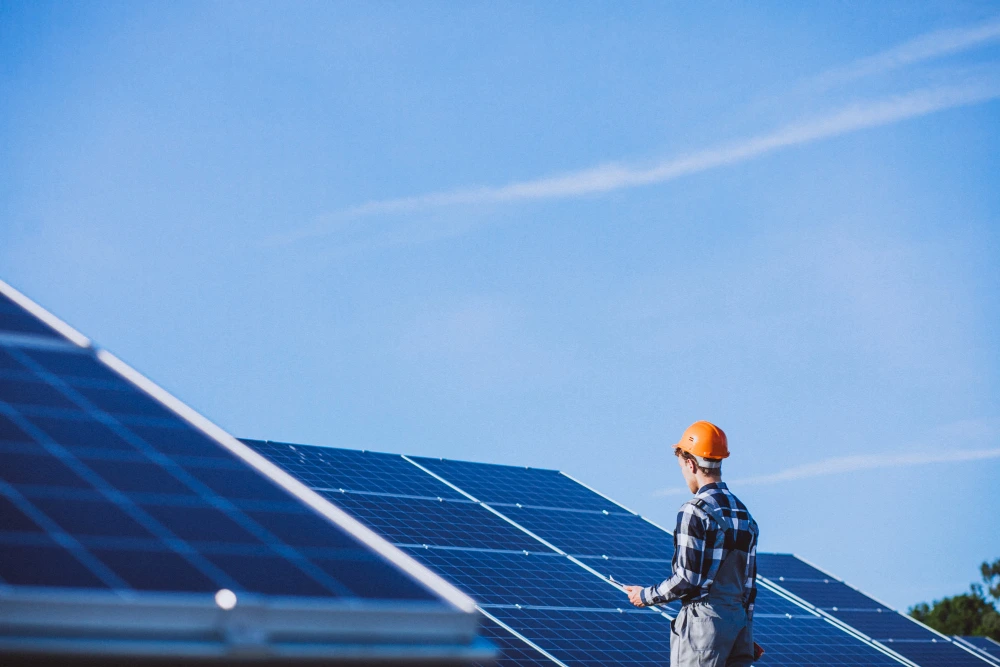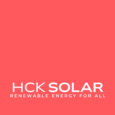
Rooftop solar power has become a popular choice for both businesses and homeowners. If you’re thinking about installing a solar power plant on your roof, this simple guide will help you plan your project effectively by covering key factors such as costs, technical requirements and sustainability.
Essentials that you must know:
1. Is the roof ready?
Before deciding on installing a rooftop solar power system, it is very important to evaluate whether your roof can handle such a setup. Ensure that you check the following-
- Strong and uninterrupted source of sunlight, any obstruction such as trees, buildings, or objects blocking the sun or casting shadows needs to be checked.
- A minimum clearance of 100mm between the roof and module structure is to be maintained to allow sufficient air circulation. Anything less is a compromise.
2. Structural Design &Stability Analysis.
A detailed structural stability analysis of the module support structures needs to be carried out. Your solar power plant contractor must provide clarity that the structures can withstand applied loads and pressures such as wind, the dead weight of modules, and other environmental factors.
3. Determine the power required
One of the biggest questions that you need the answer to is, what is your electricity usage? You can analyze old electricity bills to find out the average monthly power use in (kWh).
This will help you determine the following
- The required/ desired capacity for your system.
- Determine if you want to go full offset (full usage) or partial
4. Ensure long-term investment, live up to it
To ensure long-term performance, all mounting structures need to be treated with anti-corrosion protection. Galvanized steel structures are coated with a minimum of 80 microns of HDG (hot dip galvanizing), while aluminum components anodized to at least 10 microns is a good idea. This protects the metal from rust, oxidation, and wear, extending the lifespan of the structure.
5. Is this the right solar power system?
Choosing a solar power system type that caters to your needs is important. Three types to select from-
- On-grid (grid-tied) solar systems –These systems are directly connected to the public electricity grid. They have the simplest setup and are cost-effective.
- Off-grid (standalone) solar system- As the name suggests off-grid solar system “stands alone,” meaning these systems are not connected to the public grid and are suitable for remote locations without access to the grid. They are comparatively less cost-effective.
- Hybrid- These systems combine the aspects of both on-grid and off-grid.
Knowing and identifying which system suits you better in terms of location, module, cost, power requirements, etc., will help you make a better and more sustainable choice.
6. Cost, ROI, and more.
- The cost has rapidly decreased over the years. With the self-reliance of the country increasing with each passing day and the market size growing at a good pace,complemented by supply lines and skilled manpower, solar has become an investment that earns for itself. While analyzing cost, the key components of the system, structure, and surface it will be installed become vital to consider. In ideal conditions, the plant can recover its investments within three years and start generating a return for the investor thereafter.
7. Consider the following for Cable design:
- DC cables are sized by considering the actual distance from PV modules to the inverter and the current they carry. Voltage drop and power loss calculations estimates are essential. The cable design also accounts for ambient temperature derating to avoid overheating and maintain system efficiency. However, the quality of DC cables significantly affects plant safety, as they manage voltage drop, temperature derating, and prevent overheating.
- Using outdated or non-compliant cables can lead to performance loss and electrical hazards. It is a good idea to adhere to the EN50618 standard, which ensures higher UV resistance, flame retardancy, and insulation durability.
- Ensure positive and negative cables are laid in separate conduits as per IEC 62548 guidelines, which reduces the risk of short circuit, overall electrical safety, and fire risk.
- Always use the certified MC4 connectors from reputable brands like Stäubli or Amphenol. These connectors ensure low contact resistance, high IP protection, and secure locking, thereby improving generation reliability and reducing the risk of arcing or loose connections.
- For long-term performance, ensure cable dressing is done using UV-resistant outdoor-rated clamps. These ensure that cables are securely fastened and do not sag or move over time, preventing any possibility of faults.
- AC cables to be sized so that the voltage drop from the inverter to the LT termination point does not exceed 3%.Route AC cables through structured and predefined cable tray systems. This protects the cables from mechanical damage, ensures neat cable management, and provides ease of future maintenance or inspection.
- Use shielded, armored communication cables for inverter monitoring and data logging.
- Label all DC strings and AC cables with UV-proof tags for easier maintenance and fault tracking.
8. AC protection
- Usage of MCBs/MCCBs rated at least 20% higher than the inverter output.
- High-quality surge protection devices (SPDs) could be installed to safeguard against voltage surges.
9. Proper earthing has to be used in the system.
- Usage of copper-bonded rods with a minimum 250-micron coating or GI pipes with a minimum 80-micron HDG coating.
- Earthing Connections have to be done with Quality Earth Strips. Minimum 80-micron GI earth strips are used for all earthing connections.
10. Safety Access and Maintenance Provision
- Install stainless safety ropes with proper spacing from the shed for safe maintenance access.
- Lay walkways on dedicated supports, not directly on roof sheets.
Conclusion
Installing a rooftop solar system is more than just assembling a few panels. It is a systematic plan, an engineered solution. This guide for Rooftop Solar aims to help you from the very start. By following these technical and planning steps, you can ensure your system is geared up to be safe, efficient, and long-lasting.
At HCK Solar, we make it our responsibility to turn your simple vision into reality. We offer turnkey design, engineering, installation, and commissioning of solar power plants across the country as a vendor-neutral solutions provider, bringing best-in-class value and services. We also offer financing support for large-scale or commercial projects. Our services include EPC services for all types of solar plants, such as Rooftop, Ground mounted, and Floating for Open Access, Net Meter. With HCK Solar, you’re not just going solar; you’re collaborating with a team that plans, builds, and maintains your solar journey every step of the way.
Click here www.hcksolar.com
